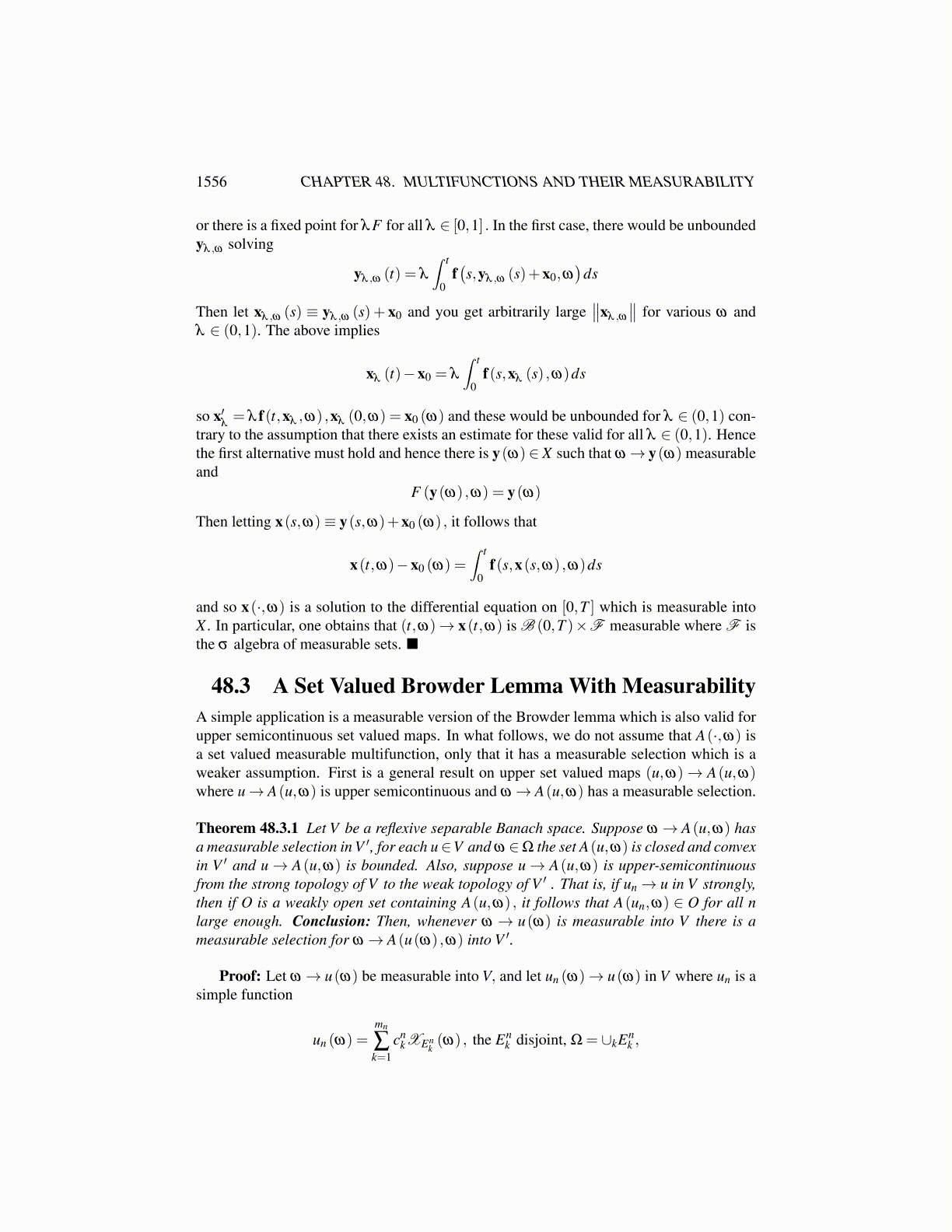
1556 CHAPTER 48. MULTIFUNCTIONS AND THEIR MEASURABILITY
Proof: The space X is separable and so by the Riesz representation theorem and thePettis theorem, it suffices to verify that for y ∈ X ,
ω →∫ T
0
∫ t
0f(s,y(s)+x0 (ω) ,ω)ds ·σ (t)dµ (t)
is measurable whenever σ ∈ L∞ ([0,T ] ,µ) and µ is a finite Radon measure. By productmeasurability, there are simple functions sn (t,x,ω) converging to f(t,x,ω) pointwise andwe can have |sn (t,x,ω)| ≤ |f(t,x,ω)| where
sn (t,x,ω) =mn
∑i=1
ciXEni(t,x,ω) ,En
i ∈B ([0,T ]×Rn)×F .
Therefore, for fixed ω,(t,x)→ sn (t,x+x0 (ω) ,ω) is Borel measurable and so
t→ sn (t,y(t)+x0 (ω) ,ω)
is also Borel measurable so the above integral with f replaced with sn surely makes sense.Then for y ∈ X , you would have from dominated convergence theorem and assumed esti-mate 48.2.4, ∫ T
0
∫ t
0sn (s,y(s)+x0 (ω) ,ω)ds ·σ (t)dµ (t)
→∫ T
0
∫ t
0f(s,y(s)+x0 (ω) ,ω)ds ·σ (t)dµ (t)
and so the issue devolves to whether
ω →∫ T
0
∫ t
0sn (s,y(s)+x0 (ω) ,ω)ds ·σ (t)dµ (t) (48.2.5)
is F measurable. Let P be the rectangles B×F where B is Borel in [0,T ]×Rn and F ∈F .Let G ≡{
E ∈ σ (P) : ω →∫ T
0
∫ t
0XE (s,y(s)+x0 (ω) ,ω)ds ·σ (t)dµ (t) is F measurable
}the above condition holding for all σdµ . Obviously G ⊇P . Indeed,
ω →XB (s,y(s)+x0 (ω))XF (ω) = XB×F (s,y(s)+x0 (ω) ,ω)
is measurable because B is Borel and composition of Borel functions with a measurablefunction is measurable. It is also clear that G is closed with respect to countable disjointunions and complements. This follows from the monotone convergence theorem in thecase of disjoint unions and from the observation that
XE (s,y(s)+x0 (ω) ,ω)+XEC (s,y(s)+x0 (ω) ,ω) = 1
in the case of complements. Hence, by Dynkin’s lemma, G = σ (P) = B ([0,T ]×Rn)×F . On consideration of components of sn, it follows that 48.2.5 is indeed measurable andthis establishes the needed result.